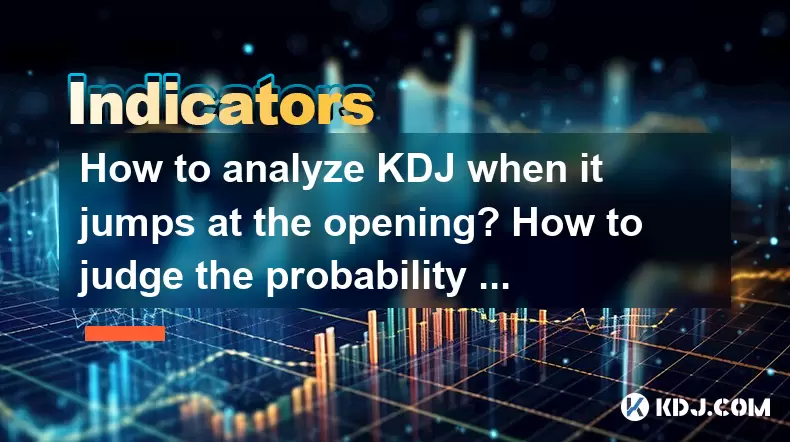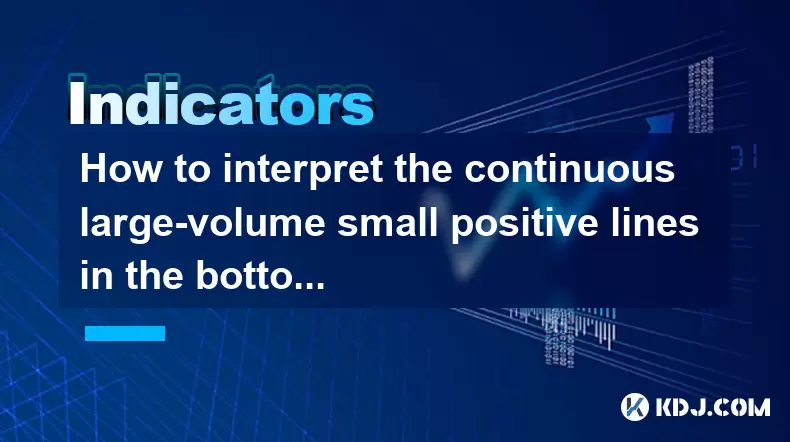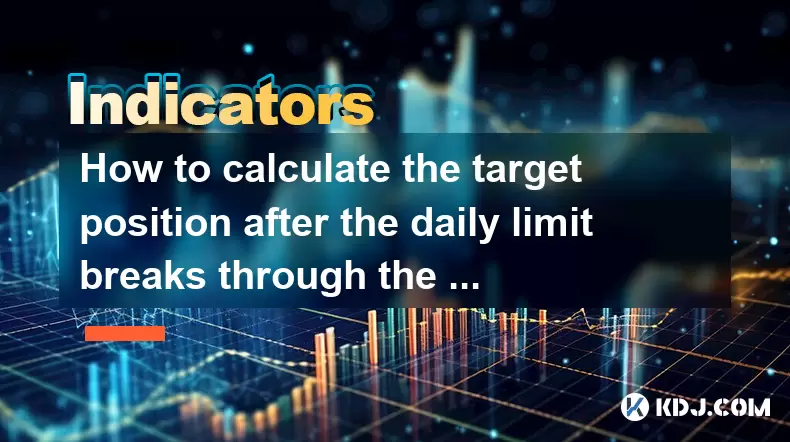-
 Bitcoin
Bitcoin $101,898.5005
-0.75% -
 Ethereum
Ethereum $2,258.1125
-1.07% -
 Tether USDt
Tether USDt $1.0004
0.01% -
 XRP
XRP $2.0178
-2.93% -
 BNB
BNB $624.0243
-1.53% -
 Solana
Solana $134.3298
-0.90% -
 USDC
USDC $0.9999
0.01% -
 TRON
TRON $0.2675
-2.05% -
 Dogecoin
Dogecoin $0.1538
-1.96% -
 Cardano
Cardano $0.5482
-1.11% -
 Hyperliquid
Hyperliquid $35.5636
5.45% -
 Bitcoin Cash
Bitcoin Cash $453.4902
-1.66% -
 Sui
Sui $2.5134
-2.97% -
 UNUS SED LEO
UNUS SED LEO $9.1292
1.77% -
 Chainlink
Chainlink $11.8457
-1.60% -
 Stellar
Stellar $0.2312
-2.73% -
 Avalanche
Avalanche $16.9721
0.29% -
 Toncoin
Toncoin $2.7549
-3.82% -
 Shiba Inu
Shiba Inu $0.0...01081
-1.10% -
 Litecoin
Litecoin $80.8250
-0.71% -
 Hedera
Hedera $0.1374
0.21% -
 Monero
Monero $305.4827
-2.36% -
 Ethena USDe
Ethena USDe $1.0006
0.00% -
 Dai
Dai $1.0000
-0.01% -
 Polkadot
Polkadot $3.2085
-3.12% -
 Bitget Token
Bitget Token $4.0845
-3.13% -
 Uniswap
Uniswap $6.3353
-1.63% -
 Pi
Pi $0.5085
-0.70% -
 Pepe
Pepe $0.0...08913
-3.82% -
 Aave
Aave $232.7090
-0.58%
How to analyze KDJ when it jumps at the opening? How to judge the probability of gap filling?
The KDJ indicator's jump at the opening can signal strong market momentum, while gap filling probability depends on gap size, volume, and market trend.
May 24, 2025 at 03:00 am

The KDJ indicator, commonly used in the cryptocurrency market, is a technical analysis tool that helps traders identify potential buy and sell signals. When the KDJ jumps at the opening, it can signal significant market movements, and understanding how to analyze this can be crucial for making informed trading decisions. Additionally, the concept of gap filling is essential in understanding market behavior and potential price movements. This article will delve into how to analyze the KDJ when it jumps at the opening and how to judge the probability of gap filling in the cryptocurrency market.
Understanding the KDJ Indicator
The KDJ indicator is derived from the stochastic oscillator and is used to predict price reversals. It consists of three lines: K, D, and J. The K line represents the fastest line, D is a moving average of K, and J is calculated as 3K - 2D. The KDJ values range from 0 to 100, with levels above 80 indicating overbought conditions and levels below 20 indicating oversold conditions.
When the KDJ jumps at the opening, it can indicate strong momentum in the market. This jump can be due to various factors such as news releases, significant market events, or high trading volumes. Traders should pay close attention to the direction and magnitude of the jump to gauge the potential strength of the trend.
Analyzing KDJ Jumps at the Opening
Analyzing the KDJ when it jumps at the opening involves several key steps:
Identify the direction of the jump: If the KDJ lines jump upwards, it suggests bullish momentum, while a downward jump indicates bearish momentum. The direction can help traders decide whether to enter a long or short position.
Assess the magnitude of the jump: A significant jump in the KDJ lines can indicate strong market sentiment. A larger jump may suggest a more sustained trend, whereas a smaller jump might be less reliable.
Consider the context: The jump should be analyzed in the context of the overall market trend and other technical indicators. For instance, if the market has been in a downtrend and the KDJ jumps upwards at the opening, it might signal a potential reversal.
Watch for divergence: If the price action diverges from the KDJ movement, it can be a warning sign. For example, if the price makes a new high but the KDJ fails to follow, it might indicate weakening momentum and a potential reversal.
Judging the Probability of Gap Filling
A gap in the cryptocurrency market occurs when the price opens significantly higher or lower than the previous close, leaving a blank space on the chart. Understanding the probability of gap filling is crucial for traders, as it can affect their trading strategies.
Analyze the size of the gap: Larger gaps are less likely to be filled quickly. Smaller gaps, on the other hand, have a higher probability of being filled within a shorter period.
Consider the volume: High trading volume accompanying the gap can indicate strong market sentiment and a lower probability of the gap being filled. Conversely, low volume might suggest a higher chance of the gap being filled.
Evaluate the market trend: If the gap occurs in the direction of the prevailing trend, it is less likely to be filled. For example, a bullish gap in an uptrend is more likely to remain unfilled compared to a bearish gap in an uptrend.
Look at historical data: Analyzing past instances of gaps in the same cryptocurrency can provide insights into the likelihood of gap filling. Some cryptocurrencies may have a higher tendency to fill gaps than others.
Combining KDJ Jumps and Gap Analysis
When the KDJ jumps at the opening and a gap occurs simultaneously, traders need to combine both analyses to make informed decisions. Here’s how:
Confirm the direction: If the KDJ jump aligns with the direction of the gap, it reinforces the strength of the trend. For instance, a bullish KDJ jump and a bullish gap suggest a strong upward momentum.
Assess the probability of gap filling: Use the factors mentioned earlier to judge the likelihood of the gap being filled. If the gap is small and the volume is low, the probability of filling might be higher, which could affect trading decisions.
Monitor subsequent price action: After the initial jump and gap, watch how the price evolves. If the price continues to move in the direction of the gap, it supports the initial analysis. If the price starts to reverse, it might indicate a higher chance of gap filling.
Practical Example of KDJ Jump and Gap Analysis
Let's consider a practical example to illustrate the concepts discussed:
Scenario: A cryptocurrency opens with a significant bullish gap, and the KDJ lines jump upwards at the opening.
Analysis:
- Direction of KDJ jump: The upward jump of the KDJ lines aligns with the bullish gap, suggesting strong bullish momentum.
- Magnitude of KDJ jump: The jump is significant, indicating a potentially sustained upward trend.
- Context: The market has been in a bullish trend for the past week, reinforcing the likelihood of continued upward movement.
- Gap size and volume: The gap is moderate in size, and the volume is high, suggesting a lower probability of the gap being filled quickly.
- Historical data: Historical data shows that this cryptocurrency tends to fill gaps within a few days if they occur against the trend, but in this case, the gap aligns with the trend.
Decision: Based on the analysis, a trader might decide to enter a long position, expecting the upward trend to continue. They would set a stop-loss below the gap to manage risk and monitor the price action for any signs of reversal.
Frequently Asked Questions
Q1: How often should I check the KDJ indicator when trading cryptocurrencies?
A1: The frequency of checking the KDJ indicator depends on your trading style. For day traders, checking the KDJ every few minutes to an hour can be beneficial. Swing traders might check it a few times a day or at key market times, such as the opening and closing of major trading sessions. Long-term investors might check it less frequently, perhaps daily or weekly, to gauge longer-term trends.
Q2: Can the KDJ indicator be used alone, or should it be combined with other indicators?
A2: While the KDJ indicator can provide valuable insights, it is generally more effective when used in conjunction with other technical indicators. Combining the KDJ with indicators like the Moving Average Convergence Divergence (MACD), Relative Strength Index (RSI), or Bollinger Bands can provide a more comprehensive view of market conditions and help confirm trading signals.
Q3: What are some common mistakes traders make when analyzing KDJ jumps at the opening?
A3: Some common mistakes include relying solely on the KDJ without considering other factors, misinterpreting the magnitude of the jump, and ignoring the broader market context. Traders might also fail to set appropriate stop-losses or take-profit levels, leading to increased risk. Additionally, overtrading based on every KDJ jump can result in unnecessary losses.
Q4: How can I improve my skills in judging the probability of gap filling?
A4: To improve your skills in judging the probability of gap filling, practice analyzing historical data and keeping a trading journal to track your observations and outcomes. Learn from experienced traders, and consider using backtesting tools to test different scenarios. Additionally, staying updated on market news and understanding the fundamental factors affecting the cryptocurrency can enhance your analysis.
Disclaimer:info@kdj.com
The information provided is not trading advice. kdj.com does not assume any responsibility for any investments made based on the information provided in this article. Cryptocurrencies are highly volatile and it is highly recommended that you invest with caution after thorough research!
If you believe that the content used on this website infringes your copyright, please contact us immediately (info@kdj.com) and we will delete it promptly.
- XRP Rally Meets Neo Pepe Presale: A Meme Coin Revolution?
- 2025-06-23 17:05:13
- Coin-Op Comeback: Arcade Bars, Stern, and a Director's New Venture
- 2025-06-23 16:45:12
- XRP in Japan: From Community Day Tacos to Payment Sector Transformation
- 2025-06-23 17:05:13
- LILPEPE Presale Frenzy: The Meme Coin Revolution is Here, Ya'll!
- 2025-06-23 16:45:12
- Bitcoin Crash Incoming? Kiyosaki Bets Big on Silver Amidst Global Uncertainty
- 2025-06-23 17:25:11
- Dogecoin, Meme Coins, Price Prediction: Riding the Bullish Wave?
- 2025-06-23 17:25:11
Related knowledge

Is the high opening and low closing and huge volume the next day a trap for more?
Jun 23,2025 at 05:07pm
Understanding High Opening and Low Closing with Huge VolumeWhen traders observe a high opening followed by a low closing and massive volume the next day, it often raises concerns about whether this is a trap set by larger players in the market. This pattern typically indicates strong volatility within a short period, which can confuse retail investors. ...

How to interpret the MACD's second golden cross on the water but insufficient volume?
Jun 23,2025 at 05:01pm
Understanding the MACD Indicator and Its SignificanceThe Moving Average Convergence Divergence (MACD) is a widely used technical analysis tool in cryptocurrency trading. It helps traders identify potential buy or sell signals by showing the relationship between two moving averages of an asset’s price. The MACD line, signal line, and histogram are the th...

How much volume is required for the W-bottom to break through the neckline of the time-sharing chart?
Jun 23,2025 at 04:21pm
Understanding the W-Bottom Pattern in Cryptocurrency TradingThe W-bottom pattern is a popular technical analysis formation used by traders to identify potential bullish reversals. It typically appears at the end of a downtrend and resembles the letter 'W' on price charts. In the context of cryptocurrency trading, where volatility is high and trends shif...

How to interpret the continuous large-volume small positive lines in the bottom area?
Jun 23,2025 at 04:43pm
Understanding the Basics of 'Large-Volume Small Positive Lines'In technical analysis, especially within the cryptocurrency market, the pattern known as 'large-volume small positive lines' refers to a scenario where the price increases slightly (small positive candlestick) but is accompanied by unusually high trading volume. This phenomenon typically occ...

How to read the sideways consolidation after the bottom volume and long positive line?
Jun 23,2025 at 02:28pm
Understanding the Sideways ConsolidationWhen analyzing cryptocurrency charts, sidewards consolidation refers to a phase where prices move within a narrow range without a clear upward or downward trend. This pattern often appears after significant price movements, such as a sharp increase followed by a period of equilibrium between buyers and sellers. In...

How to calculate the target position after the daily limit breaks through the previous high?
Jun 23,2025 at 02:57pm
Understanding the Daily Limit BreakthroughIn cryptocurrency trading, a daily limit typically refers to the maximum price movement allowed within a single trading day on certain exchanges. When this limit is breached, especially when it surpasses the previous high, traders often seek to calculate the target position or expected price movement following s...

Is the high opening and low closing and huge volume the next day a trap for more?
Jun 23,2025 at 05:07pm
Understanding High Opening and Low Closing with Huge VolumeWhen traders observe a high opening followed by a low closing and massive volume the next day, it often raises concerns about whether this is a trap set by larger players in the market. This pattern typically indicates strong volatility within a short period, which can confuse retail investors. ...

How to interpret the MACD's second golden cross on the water but insufficient volume?
Jun 23,2025 at 05:01pm
Understanding the MACD Indicator and Its SignificanceThe Moving Average Convergence Divergence (MACD) is a widely used technical analysis tool in cryptocurrency trading. It helps traders identify potential buy or sell signals by showing the relationship between two moving averages of an asset’s price. The MACD line, signal line, and histogram are the th...

How much volume is required for the W-bottom to break through the neckline of the time-sharing chart?
Jun 23,2025 at 04:21pm
Understanding the W-Bottom Pattern in Cryptocurrency TradingThe W-bottom pattern is a popular technical analysis formation used by traders to identify potential bullish reversals. It typically appears at the end of a downtrend and resembles the letter 'W' on price charts. In the context of cryptocurrency trading, where volatility is high and trends shif...

How to interpret the continuous large-volume small positive lines in the bottom area?
Jun 23,2025 at 04:43pm
Understanding the Basics of 'Large-Volume Small Positive Lines'In technical analysis, especially within the cryptocurrency market, the pattern known as 'large-volume small positive lines' refers to a scenario where the price increases slightly (small positive candlestick) but is accompanied by unusually high trading volume. This phenomenon typically occ...

How to read the sideways consolidation after the bottom volume and long positive line?
Jun 23,2025 at 02:28pm
Understanding the Sideways ConsolidationWhen analyzing cryptocurrency charts, sidewards consolidation refers to a phase where prices move within a narrow range without a clear upward or downward trend. This pattern often appears after significant price movements, such as a sharp increase followed by a period of equilibrium between buyers and sellers. In...

How to calculate the target position after the daily limit breaks through the previous high?
Jun 23,2025 at 02:57pm
Understanding the Daily Limit BreakthroughIn cryptocurrency trading, a daily limit typically refers to the maximum price movement allowed within a single trading day on certain exchanges. When this limit is breached, especially when it surpasses the previous high, traders often seek to calculate the target position or expected price movement following s...
See all articles
























































































